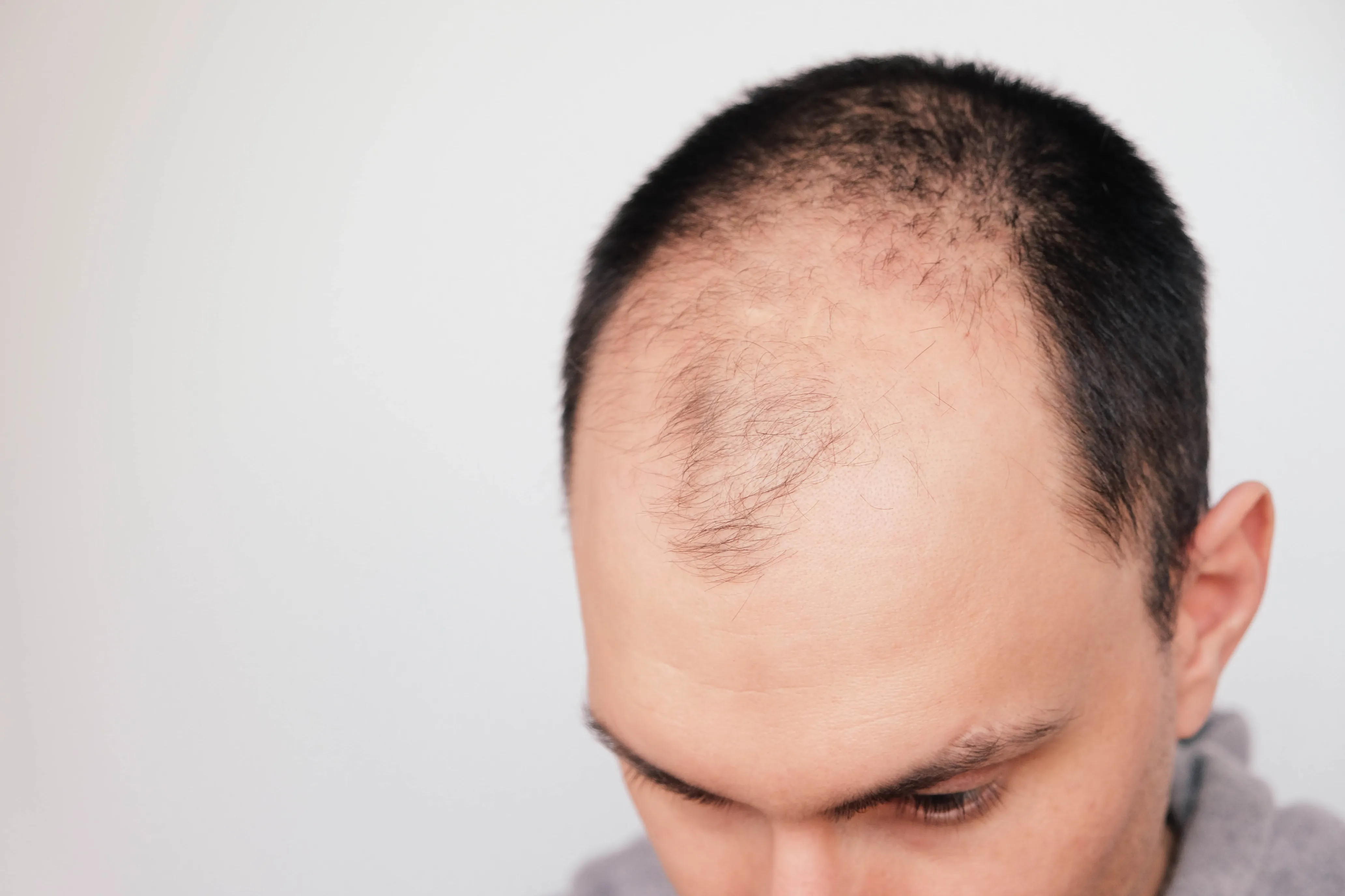Working Time
-
Mon - Sat :
10:00am - 01:00pm
05:00pm - 08:00pm
Contact Info
-
Phone: 7624008000
- recombhtc@gmail.com
Male Pattern Hair Loss

Norwood Scale of Baldness
The Norwood scale is a classification system used to measure the extent and progression of male pattern baldness. It consists of several stages, ranging from minimal hair loss to advanced baldness:
- Stage 1: No significant hair loss or recession of the hairline.
- Stage 2: There is a slight recession of the hairline around the temples, known as an adult or mature hairline.
- Stage 3: The first signs of clinically significant balding appear. The hairline recedes further at the temples, forming an M, U, or V shape.
- Stage 4: The hairline recession is more severe than in Stage 3. Additionally, there is a sparse or no hair on the crown.
- Stage 5: The hairline and crown are still separated but the thin areas are larger.
- Stage 6: The bridge of hair that once separated the crown and hairline is now gone, leaving the top of the head completely bald.
- Stage 7: The most severe stage, only a band of hair around the sides and back of the scalp remains.
Treatment Options for Male Pattern Hair Loss
There are several treatment options available for male pattern hair loss, ranging from medical treatments to surgical procedures and lifestyle changes:
- Medications:
- Minoxidil (Rogaine): An over-the-counter topical solution that can be applied to the scalp to stimulate hair growth and slow hair loss.
- Finasteride (Propecia): A prescription oral medication that reduces DHT levels, which can slow hair loss and, in some cases, regrow hair.
- Hair Transplant Surgery:
- Follicular Unit Transplantation (FUT): This method involves removing a strip of scalp from a donor area and then dividing it into individual follicular units to be transplanted to thinning or bald areas.
- Follicular Unit Extraction (FUE): In this technique, individual hair follicles are extracted from the donor area and transplanted to the balding areas. FUE is less invasive than FUT and leaves minimal scarring.
- Low-Level Laser Therapy (LLLT): This non-invasive treatment uses red light therapy to stimulate hair follicles and promote hair growth.
- Platelet-Rich Plasma (PRP) Therapy: This involves drawing a small amount of the patient’s blood, processing it to concentrate the platelets, and then injecting it into the scalp to stimulate hair growth.
- Lifestyle Changes: Improving diet, reducing stress, and avoiding hair-damaging practices can help manage hair loss. A balanced diet rich in vitamins and minerals, particularly iron, zinc, and vitamins A and D, supports healthy hair growth.
- Scalp Micropigmentation: This cosmetic procedure involves tattooing tiny dots on the scalp to create the appearance of a fuller head of hair.
Men experiencing hair loss should consult with a healthcare professional or dermatologist to determine the most appropriate treatment based on their specific condition and overall health.


